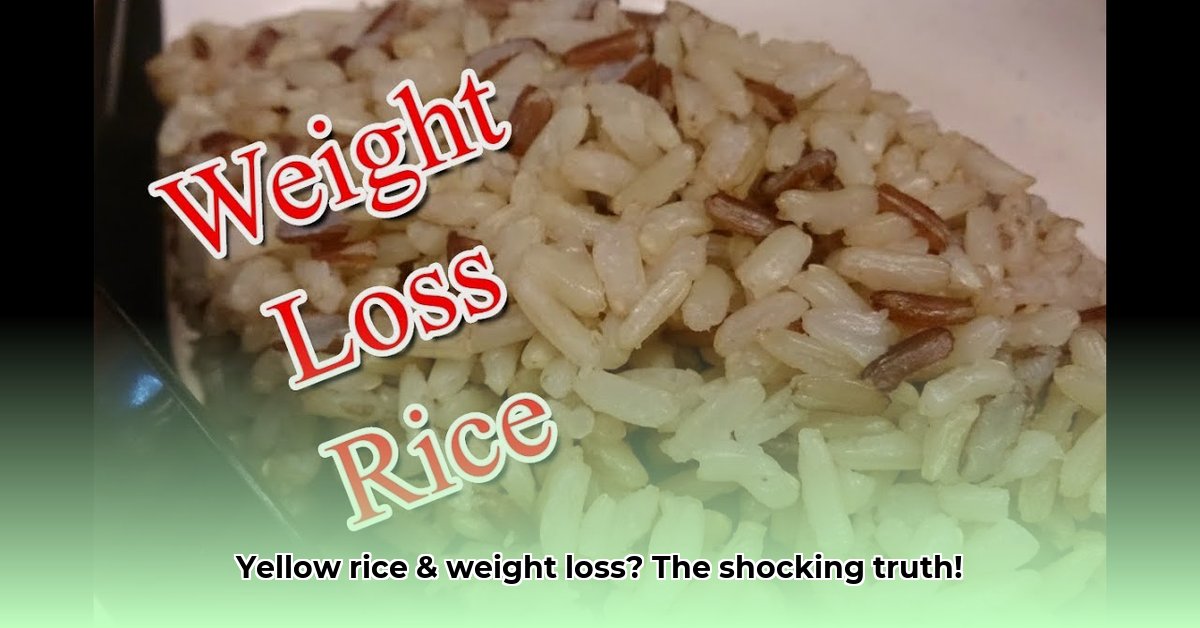
Decoding the Nutritional Value of Yellow Rice
Yellow rice, often vibrant with turmeric or saffron, is a delicious staple in many cuisines. But can it fit into a weight-loss plan? A typical cup of cooked white yellow rice contains approximately 200 calories. Brown yellow rice, however, offers a significant nutritional advantage. Its bran layer provides more fiber and a lower glycemic index (GI) – a measure of how quickly a food raises blood sugar. A lower GI is generally better for weight management because it promotes steady energy levels and prevents energy crashes. Brown rice is the clear winner here. White rice, lacking the bran layer, digests rapidly, causing blood sugar spikes and subsequent dips – not ideal for consistent weight loss.
Yellow Rice and Weight Loss: The Honest Truth
Is yellow rice a weight-loss friend or foe? The answer is nuanced. While it's not a miracle food, yellow rice can be part of a healthy weight-loss plan with mindful portion control. It's relatively high in carbohydrates, so controlling serving sizes is crucial. Remember, sustainable weight loss hinges on a balance between calories consumed and calories burned. Consider your diet a vibrant mosaic, not a single tile. Yellow rice is one piece, but it shouldn't be the whole picture. A balanced approach includes lean protein, a variety of vegetables, and healthy fats.
Making Yellow Rice Your Weight-Loss Ally: A Practical Guide
Here's how to incorporate yellow rice into your diet strategically:
Choose Wisely: Opt for brown yellow rice over white. Its higher fiber content will keep you feeling fuller for longer.
Portion Control: A half-cup serving of cooked brown rice is a good starting point. Use a smaller bowl or measuring cup to manage portion sizes effectively.
Cook Smart: Steam, bake, or sauté your rice with a minimal amount of healthy oil. Avoid excessive butter, oil, or sugary sauces.
Build Balanced Meals: Pair yellow rice with lean protein (chicken, fish, tofu) and plenty of non-starchy vegetables. This creates a well-rounded, satiating meal.
Listen to Your Body: Pay attention to how your body responds. Bloating or discomfort might indicate a need to reduce your portion size or explore alternative grains.
A Sample Day of Balanced Eating with Yellow Rice
This sample meal plan illustrates how to incorporate yellow rice into a balanced diet. Remember, adjust portions to fit your individual calorie needs.
| Meal | Food Items | Key Benefits |
|---|---|---|
| Breakfast | Greek yogurt with berries and a sprinkle of almonds | High protein, antioxidants, healthy fats |
| Lunch | Large salad with grilled chicken and ½ cup brown yellow rice | Balanced macronutrients, fiber, low saturated fat |
| Dinner | Baked salmon with ½ cup brown yellow rice and roasted broccoli | Lean protein, complex carbohydrates, vitamins |
| Snacks | Apple slices with almond butter or a small handful of nuts | Sustained energy, fiber, healthy fats |
Beyond Yellow Rice: The Holistic Approach
Sustainable weight loss is a marathon, not a sprint. It demands a holistic approach encompassing a balanced diet, regular exercise and mindful eating habits. Focusing solely on one food isn't the key. A balanced approach is superior.
Key Takeaways
- Yellow rice isn't inherently bad for weight loss, but portion control is essential.
- Brown rice is a healthier option than white rice due to its higher fiber content.
- Incorporate yellow rice into a balanced, calorie-controlled diet.
- Mindful eating habits and regular exercise are crucial for successful and sustainable weight loss.